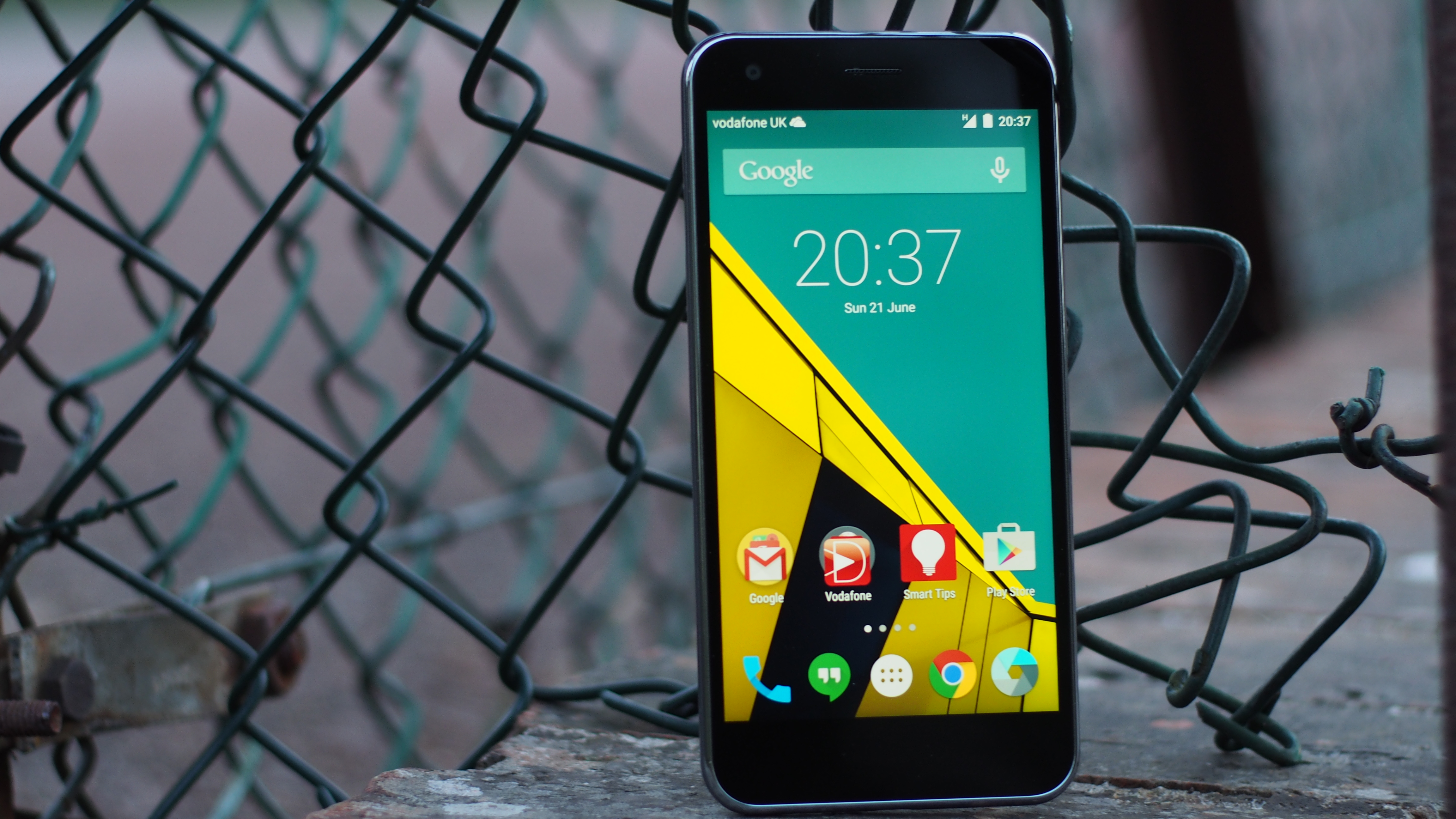Why you can trust TechRadar
Screen
Oh boy, what a display. For the price, the Vodafone Smart Ultra 6 has perhaps the best screen I've ever seen. If this is where the budget market is going, then we're all in for a treat.
Just a year ago, being on a budget meant accepting a resolution of 960 x 540. How things have changed: now devices such as the Microsoft Lumia 640 are at the head of a 720p charge, bringing higher resolution panels as far down the price ladder as is currently possible.
Yet, with a Full HD resolution of 1920 x 1080, the Vodafone Smart Ultra 6 achieves a first at this price point, sidestepping its competitors with a heady PPI of 400. With such a large screen and high pixel count, video and reading on the device are a treat.
This is only emphasized by the colour accuracy of the display. Accustomed to AMOLED screens such as the Samsung Galaxy S5, I have typically been underwhelmed by LCD screens, at least in the budget section of the market where a lack of dazzle is their defining feature.
However the Vodafone Smart Ultra 6 has changed my opinion, and then some. The screen is pleasant on the eyes, rendering scenes with enough vibrancy to be interesting, but without being so bright as to look cartoonish.
Being an IPS screen, good viewing angles are a given from the Smart Ultra 6. But the device even exceeded my expectations in this regard, with no drop-off in either colour or brightness, even when viewing from extreme angles.
The only slight downside to the display is the lack of Gorilla Glass. This coating is almost ubiquitous among well known phone manufacturers, and the oil-resistant coating it has helps to keep everything smooth and pleasant.
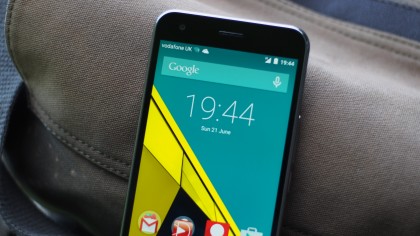
Having used devices with Gorilla Glass for quite some time, it is easy to detect its absence from the Smart Ultra 6. Scrolling through web pages often required pushing with a little more force than usual to maintain speed, which unfortunately resulted in unwanted presses quite frequently.
The device possesses an automatic brightness setting, although this isn't activated by default. Essentially, this allows the phone to detect environmental brightness and adjust its display accordingly, something that often does not come as standard in mobile devices.
The display can get impressively bright, remaining usable in all but the sunniest of conditions, again something that is unusual at this price point.
In all, this is a screen that wholeheartedly outperforms all expectations. Bright, colourful and detail-packed, this is likely one of the best panels ever available at this price point, and is a high point of the device.
Bloatware
While the Vodafone Smart Ultra 6 has many admirable qualities, it also has a number of negatives. And of these, the bloatware counts as one of the most significant.
At first glance, the approach taken to the software experience on the device is refreshing. As with the hardware design, Vodafone has opted to leave things primarily as Google intended, with the Smart Ultra boasting an almost stock experience.
This is no doubt something that will leave Android purists overjoyed. Although many manufacturers try to improve on the original experience, such as with Huawei's heavily skinned P8 or the Samsung Galaxy Note 4, many find it difficult to do so. In the worst cases, complicated manufacturer skins can slow down the software experience, or even worse, confuse the user.
As such, the Vodafone should appeal to many – that is, until they try to text.
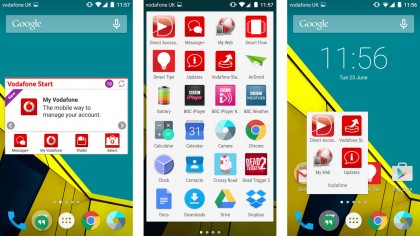
When a carrier or manufacturer produces a device, especially for the budget market, services and apps come bundled in, as a way to recoup costs. Vodafone has included quite a few, of which Message+ is the most prominent. Set as the default texting app, it has a long set-up process, and afterwards turns out to be nothing more than a generic, slow instant messenger.
It is hardly alone: Direct Access, My Web, Updates and Vodafone Start, Smart Tips and Smart Flow also make an appearance. Mostly these are quite useless. Direct Access is a link to an online Vodafone accessories store, My Web is a hotlink to the Vodafone website. Updates works to keep all Vodafone apps updated (surprisingly), while Smart Flow is an alternate, buggy, home screen. Lastly, Smart Tips is a series of small guides on how to use a smartphone for the first time, which could admittedly be useful for some.
The prevalence of carrier apps on this device is only emphasized by the general light-touch approach on the rest of the device, and as such is quite jarring.
No frills 4G
4G is the mobile internet technology of the future. Marketed by everyone from phone manufacturers to mobile carriers, it is expected to deliver an appreciable improvement in mobile internet speeds for many across the country – that is, when it arrives.
One of the main barriers of entry to 4G so far, beside a lack of availability outside the big cities, has been price. When the tech debuted in the UK, it came with a significant price point, no matter the tariff. As time has gone by, this bar has been lowered with every passing month, to the point that 4G is now accessible at almost any price point.
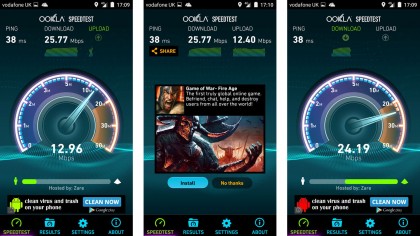
To date, however, the very last barrier to entry has remained stubbornly high: phone capability. When purchasing a flagship device, either on contract or SIM-free, it is expected to come with all bells and whistles, attached and working accordingly. The lack of 4G on something like the LG G3 would come as a shock, both to the press and the public.
At the budget level however, especially at the sub-£100 price point, 4G remains something of a luxury. As such, its inclusion on the Vodafone Smart Ultra 6 comes as something of a surprise. And as someone used to HSDPA+, this surprise proved to be very pleasant.
In the Swindon area, using the Vodafone network, I was able to achieve and maintain download speeds of 25.77 Mbps and upload speeds of 12.40 Mbps. These are hardly the best that 4G can offer, but the difference from HSDPA+ was quite noticeable.
The inclusion of 4G helps to further set the Vodafone Smart Ultra 6 apart from its competitors at this press. While other manufacturers charge extra for models with 4G (such as Motorola's Moto G 4G), that Vodafone offers it as standard is something of a coup.
Photography fun
Cameras and camera software have long been the main sphere for improvement in device design. As phones eliminate the compact camera from the market, image quality is improving with every passing model.
Again, this was something that has typically been the preserve of elite models, like the Samsung Galaxy S6, or the Nokia Lumia 1020, which respectively boast a fast aperture and a crazy megapixel count. Now, this is another battle that is moving into the budget space.
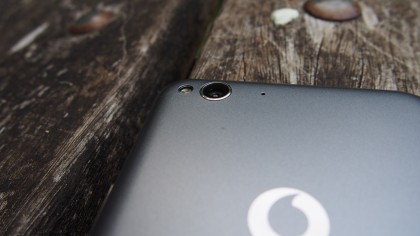
And here is a space in which Vodafone has attempted to distinguish itself from the rest of the budget pack. The Smart Ultra 6 boasts a 13MP sensor, which is quite remarkable given the price point.
Typically, although more megapixels definitely does not equal better photos, bigger numbers sell more phones simply through sounding more impressive. Last year, many devices hovering around the £100 price point had a 5MP camera, sometimes even without autofocus. Many devices in this price bracket that have debuted so far this year have gone one better, with the Moto G 2014 and the Microsoft Lumia 640 sporting an 8MP sensor with autofocus and a flash.
With 13MP to play with, the Vodafone Smart Ultra 6 immediately distinguishes itself from its peers, though the performance of this sensor is quite something else altogether.
Sean is a Scottish technology journalist who's written for the likes of T3, Trusted Reviews, TechAdvisor and Expert Reviews.
